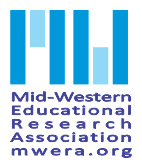Abstract
As a state with a longstanding tradition of offering bilingual education, Illinois has a legislative requirement for native language instruction in earlier grades through a model called Transitional Bilingual Education (TBE). This model does not truly develop bilingualism, however, but rather offers native language instruction to English learners (ELs) for a few years only to later mainstream them to English-only instruction. Contrasting this approach, culturally and linguistically responsive teaching not only supports EL students’ first language maintenance and second language development, but can also affirm critical aspects of their cultural, ethnic and linguistic identities. Through this framework, we present qualitative data from two elementary classrooms in Illinois enacting a TBE and dual language program model. Findings suggest that while program models are indeed one factor that influences enactment of a culturally responsive approach, societal factors and ability for stakeholders to mediate and address pressures are equally important.
Recommended Citation
Rao, Arthi B. and Morales, P. Zitlali
(2015)
"Creating a Climate for Linguistically Responsive Instruction: The Case for Additive Models,"
Mid-Western Educational Researcher: Vol. 27:
Iss.
4, Article 3.
Available at:
https://scholarworks.bgsu.edu/mwer/vol27/iss4/3


